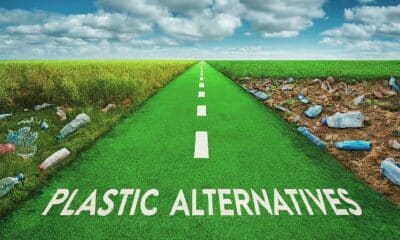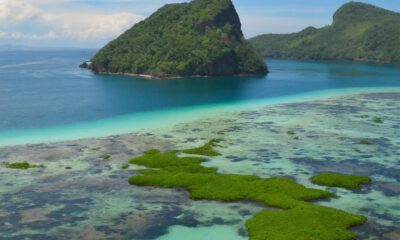Sustainability
Oneka Technologies Desalination Solution to Water Scarcity
Oneka Technologies
An exciting new marine technology may soon provide enough fresh water to supply entire cities… And it comes directly from the ocean.
Oneka Technologies, a Canadian start-up, has developed a new system for converting undrinkable seawater into clean freshwater to combat shortages around the world. The Oneka Water Desalination Machine is already filling up water reservoirs in places such as California and Chile with plans to spread much further.
The World’s Fresh Water Crisis
Without fresh water, we can’t survive, but the truth is, there simply isn’t enough to go around. Less than 3% of Earth’s water is drinkable. If the world’s water supply was represented by a volume of 100 litres, our drinkable, freshwater supply would amount to only half a teaspoon.
Not only that but in 2023, we used up a year’s worth of the Earth’s resources in just 7 months. With what little there is, we still waste a lot, and that’s exactly why a sustainable desalination process is so critical to finding a way to use that huge supply of seawater.
A water shortage is very real. There have been some things going on, recently, that have added to this shortage:
- Droughts and Climate Change
In recent years, increased global warming has aggravated the water situation, causing droughts, erratic rainfall, and evaporating water much more quickly. - Poor Water Management
In a world where resources are limited, appropriate and effective water management systems are vital. However, we don’t always hit the mark. Too often, political battles and financial issues overshadow the question of basic human needs.
- Water Pollution
More than 80% of the world’s used, dirty water is washed back into the environment without being cleaned or treated. This water is tainted with everything from sewage and pesticides to detergents. This reduces our already limited water supply.
What is the Oneka Desalination Machine?
Oneka’s new machine is a sustainable, carbon-free solution to the global water crisis. It’s an amazing new system that can turn large amounts of seawater into drinkable freshwater without any disruption to the environment.
Oneka’s impressive mission is “…making the oceans a sustainable and affordable source of water.”
No easy task to be sure, but a motivational one, nonetheless.
Modern Desalination Technology
There are two traditional methods in use in desalination plants around the world.
- Thermal Distillation: This process involves vaporizing the seawater, causing the water to naturally separate from the salt. Then the water can be processed into a drinkable state. This process, though less expensive than other traditional methods, is energy-intensive and produces a lower quality of water than other methods can offer.
- Reverse Osmosis: This multi-step process works by essentially straining seawater through a membrane with holes big enough for water to pass through, but too small for salt to permeate. After some more treatment, the system produces a supply of drinkable water.
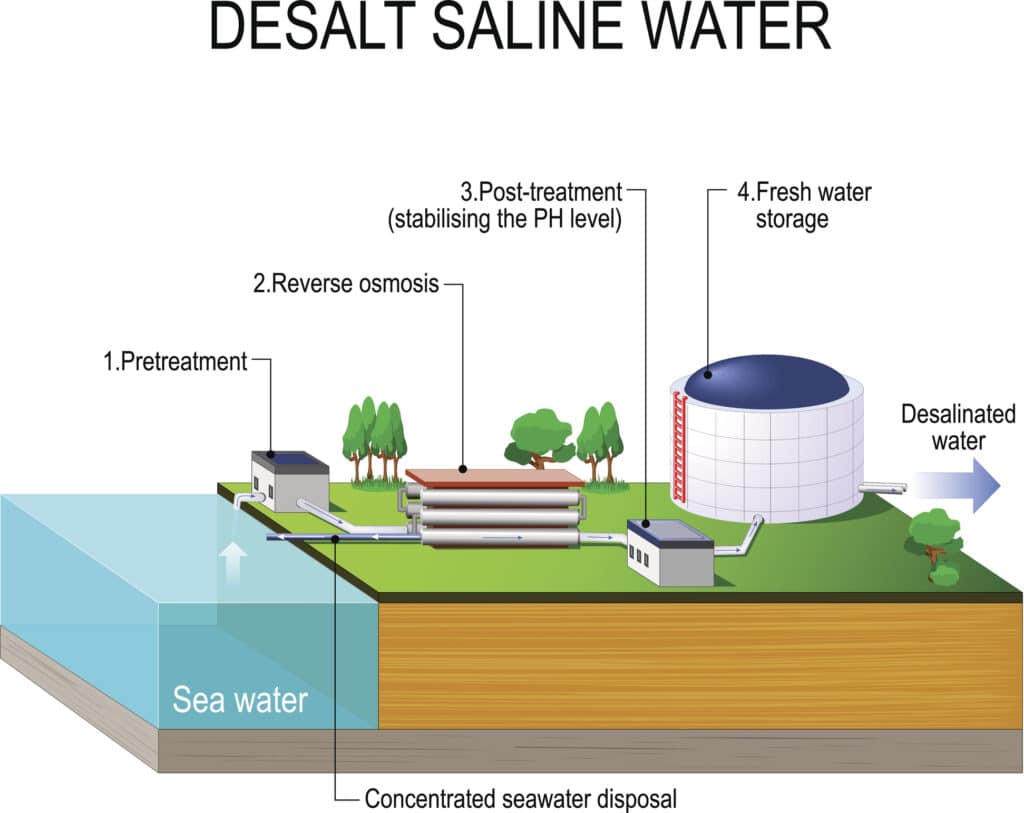
Although these methods are in widespread use, they are not the most desirable approach. They both burn fossil fuels, producing the carbon emissions that contribute to global warming. These methods are also expensive and, in the end, they produce wastewater that is salty enough to destroy marine life.
How Does the Oneka Desalination Solution Work?
Oneka’s machines are buoyant units anchored to the sea bed in areas with lots of wave action. They use the power of waves that are a minimum of 1 m high to draw in seawater. The bobbing motion of the buoys riding the waves pushes the collected water through a reverse osmosis desalination system built right into the buoy. Wave power then pumps the fresh water back to a land-based plant.

How Do Oneka Buoys Differ from Other Desalination Solutions?
The wastewater that comes from the desalination process that the Oneka system creates is a fraction as salty as what is created by traditional methods. When poured out into the open ocean, it dissipates quickly and causes no harm to the sea life. Moreover, the desalination process happens as part of the Oneka system. This greatly reduces the emissions caused by conventional reverse osmosis operations.
How Much Water Can the Oneka Desalination Machine Provide?
The machines come in three different sizes.
- The Ice Cube Class is the smallest model. Focused on disaster situations, this unit can produce 1 m3, or about 1000 litres of fresh water each day.
- The Iceberg Class is a mid-sized unit that can be used to supply resorts and coastal communities. It can produce as much as 50 m3 of freshwater per day. That’s about 50,000 litres.
- Still under development is the Glacier Class unit. This will be Oneka’s biggest buoy with a capacity to produce 500 m3, or about 500,000 litres of fresh water in a single day. That’s enough to provide for an entire city.
Could Oneka Water Technology be the Solution to Water Scarcity?
While Oneka Technologies’ desalination solution is currently experimental, a community of Oneka desalination buoys could potentially curb water scarcity. Only time will tell how impactful this new technology will be in the efforts to end the world water crisis, but the potential applications are endless.
During the August 2022 wildfires in Maui, Hawaii, the water supply became depleted and firefighters were left to watch helplessly as the fires consumed the city. Although the Island is surrounded by the vast Pacific Ocean, saltwater is not usable for fires of this magnitude as it corrodes metal firefighting equipment and sucks all the moisture out of the soil it saturates, making it impossible for plant life to regenerate.
A few years earlier, in 2018, the water supply for Cape Town, South Africa ran so low that only strict water usage regulations prevented it from becoming the first major, modern city centre to run entirely out of water. Although this city of over four million people sits on the shores of the South Atlantic Ocean, none of that water was of any help due to its salt content.
Imagine how differently these stories could have ended if the Oneka Desalination Solution had been at work.
Now Imagine what a community of interceptors will do working side-by-side with these Buoys. Interceptors are AI robots created by Ocean Cleanup that can clean up 50,000 km of trash from oceans a day. On one hand, you create fresh water, and on the other hand, you clean up oceans.
All of a sudden, we have ourselves a pretty inspirational world right here. Not a bad deal at all!
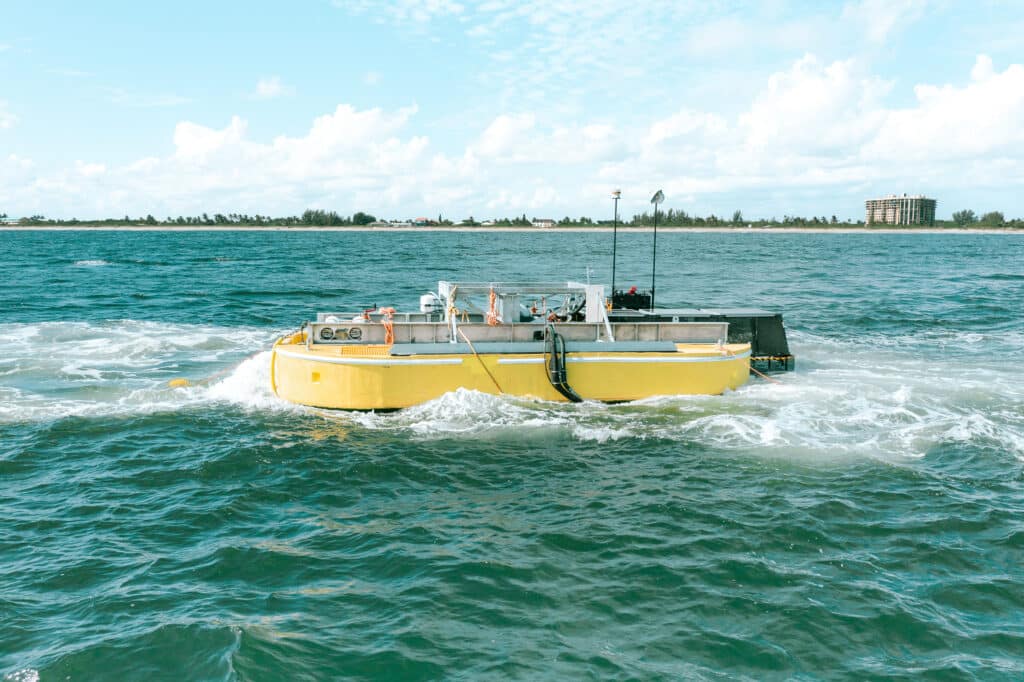
IC Inspiration
“No one should have to worry if the water is clean or if they will run out of water. No child should grow up not knowing what clean water is or never knowing what running water is. We all have a right to this water as we need it.”
These are the words of 13-year-old Autumn Pelletier in a passionate speech to the world leaders of the UN in 2018.
Most people would never guess she was talking about Canada.
In one of the most water-secure countries on the planet, many of us take for granted that every time we turn on the tap, high-quality, clean, healthy water will come flowing out. But in some parts of the country, fresh water is a luxury.
According to the Government of Canada’s Indigenous Services, over two dozen reservations have Long-Term Drinking Water Advisories (LT-DWAs) in effect. They are in every province, as far south as the US border, and sometimes situated not too far from such heavily populated areas as Toronto and Vancouver.
Yet, thanks to antiquated laws, funding for updated infrastructure and equipment has, too often, been withheld. Some of these communities sit on the shores of large, freshwater lakes. However, a lack of money for water treatment equipment prevents them from using even one drop of gallons of freshwater sitting right outside their back doors.
Autumn is an Anishinaabe girl from Wikwemikong First Nation, a small community on Manitoulin Island in Lake Huron, Ontario. She is a water activist who has traveled from her home to places as diverse as New York, to speak to the UN and Sweden where she attended the 2015 Children’s Climate Conference. She’s been nominated for awards and spoken to such high-ranking people as Canada’s Prime Minister, Justin Trudeau.
But she’s not interested in fame or status. She calls herself a water-keeper, and her mission is to fight for the rights, not just of the people, but of the water itself.
“Many people don’t think water is alive or has a spirit,” She explained to the UN leaders, “My people believe this to be true.”
She believes the water should be treated with respect. Its rights should be recognized and honoured, just as they are for people and animals.
Although a few years have passed since her speech before the UN, Autumn’s fight is far from over. She’s now the Chief Water Commissioner for the Anishinabek Nation. She continues to bring attention to the troubling water situation in many ways. She’s continued to speak at large gatherings and has been featured in MacLean’s magazine’s Top 50 Canadian Power List. She’s even created a documentary movie on the subject, which has been shown on HBO.
The world’s water crisis may seem daunting; however, it’s comforting to know that, when that day comes when everyone can easily reach a glass of cool water, we’ll have inspiring people like Autumn Pelletier to thank for it.
Sustainability
Top 5 Genius Plastic Alternatives to Help Save the Planet
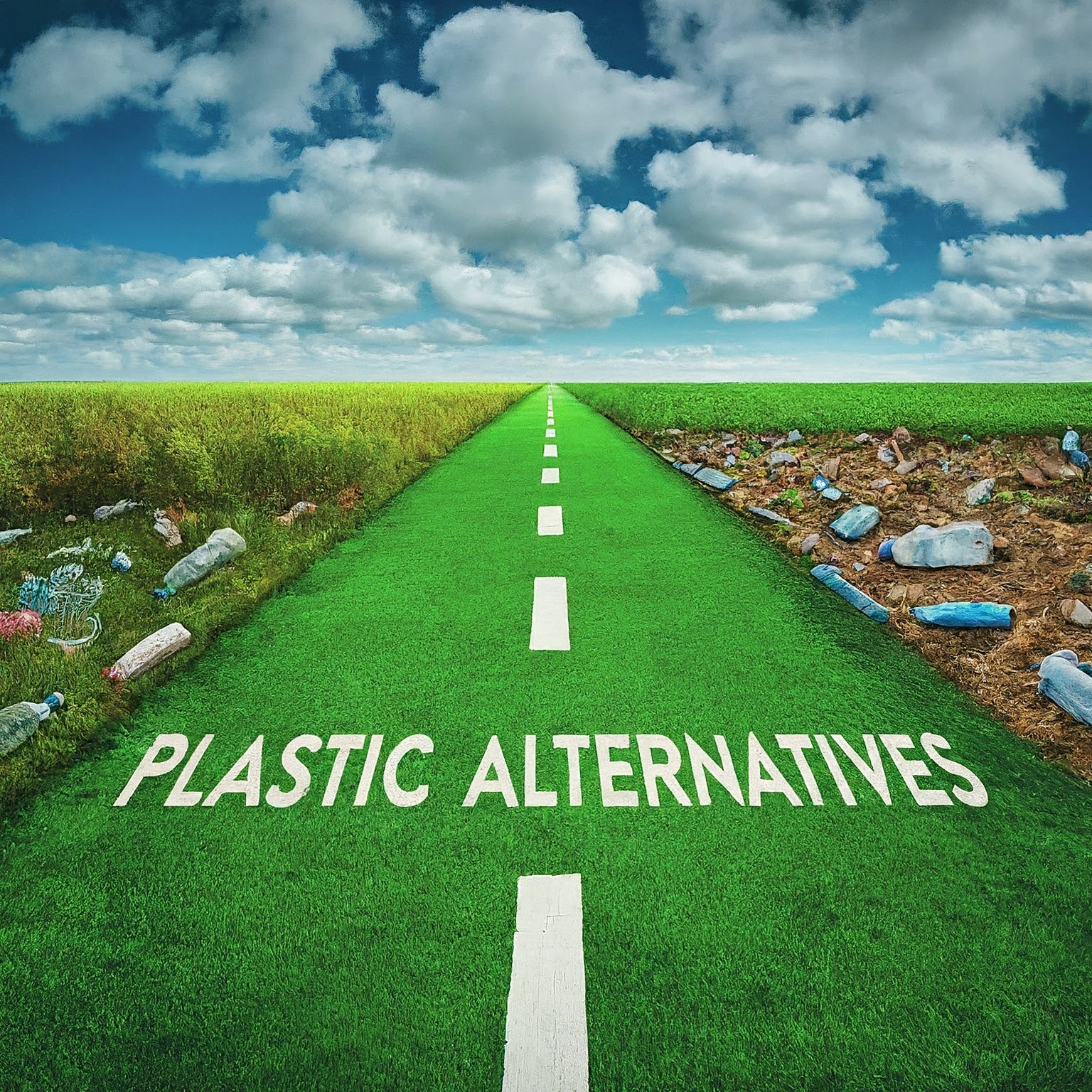
Table of Contents
Plastic Alternatives
Scientists around the world are developing innovative and exciting new alternatives to plastic. There are now ways that we can wrap, carry, and preserve our products just as we always have, but without damaging the Earth.
Nearly 400 million tonnes of plastic waste gets into air, water and soil every year.
The TeamSeas Robot works at cleaning up this plastic pollution in the ocean , and plastic-eating bacteria is being developed to clean plastic waste up on land. But the fact is that these solutions don’t target the source. They can only be so effective if plastic keeps being thrown into the environment.
In comes plastic alternatives.
What Are Plastic Alternatives?
Plastic alternatives are materials that replace traditional plastics. There are dozens of plastic alternatives, and they can all be categorized in two ways: traditional plastic alternatives and innovative plastic alternatives.
Traditional plastic alternatives have been used for centuries and became ubiquitous with plastic use; whereas innovative plastic alternatives are new and compete with plastic as a more sustainable alternative.
| Category | Materials | Goal | Stage |
|---|---|---|---|
| Traditional Plastic Alternatives | Glass, paper, bamboo, cotton, wood | Used alongside plastic because of availability | Used for centuries and have well established production methods |
| Innovative Plastic Alternatives | PHA, mushrooms, seaweed | Used as an alternative to plastic for sustainability | New and expensive production means |
Here are the top 5 genius plastic alternatives that—while new and expensive—can help save the planet by reducing plastic pollution.
Zerocircle: Plastic Alternatives from Seaweed
Seaweed has been protecting the ocean since long before human beings have been wandering the world. It only seems logical to let it keep doing that. That’s what entrepreneur Neha Jain figured when she founded Zerocircle in 2020.
Seaweed is an easily renewable resource available in most of the oceans of the world. They provide as much as 50% of the oxygen in the atmosphere and play a vital role in the health of our planet.
Zerocircle uses these plants to develop and distribute an exciting seaweed-based plastic alternative. It quickly dissolves back into water and soil, leaving no harmful chemicals behind.
WasteBased: Plastic Alternatives from Hydropol
Easily one of the biggest challenges in the battle against plastic pollution is the everyday plastic shopping bag. Wastebased, a UK-based startup has introduced an answer to that problem.
Item Bag 2.0 “… is no ordinary bag,” says their website. “It will dissolve in fresh or saltwater and leave no microplastics behind. It’s also biodegradable, non-toxic, and carbon negative.” It also dissolves in boiled water leaving no harmful chemicals behind.
Rather than the usual chemicals and polymers that traditional shopping bags are made of—like forever chemicals—Item Bag 2.0 is made from Hydropol. This biodegradable bioplastic is similar to the material used to coat dishwasher or laundry pods. Presently, it’s being manufactured from fossil fuels, but they can also be made from renewable resources such as sugar cane. Wastebased is currently working toward making the switch.
Plastic Alternatives from Potatoes
Another great idea is coming from a man at Lund University in Sweden. It’s a plastic alternative made of just potato starch and water. The potato plastic decomposes within only two months of landing in the environment. That’s a huge improvement over the 500 years it takes traditional plastics to break down.
Pontus Tornqvist, the developer of the material, took it one step further. The plastic not only breaks down quickly, but because it’s made of potato material, it actually nourishes the soil it lands in. As Pontus puts it, it’s just better to use the waste we’re already creating than to make new waste.
Ecovative: Plastic Alternatives from Mushrooms
Ecovative is a company that specializes in making packaging out of mushroom material which they grow in their own facility. They create a packaging solution with the natural binding properties of the roots of mushrooms. The solution, known as Mushroom Packaging, can be added to the compost heap to biodegrade safely and quickly into the Earth. More than that, the fungus content of the material will nourish the soil around it.
Paptic: Plastic Alternatives from Wood Fibres
Finland has another good idea about innovative plastic alternatives. Paptic is a growing company that uses a plastic, paper, and canvas alternative made from wood fibers.
They use only forests that produce more trees than they need and with careful attention to biodiversity and the natural world. The resulting product is reusable, recyclable, and biodegradable. It’s already been commercially available for several years.
Wood fiber plastic is used to make a wide variety of sturdy products including bags, food packaging, and mailers. This plastic alternative is likely to be stronger than that of plant-based alternatives.
Are Plastic Alternatives Better for the Environment?
Traditional plastic alternatives like paper, wood, and glass are heavier than plastic and release more greenhouse emissions during production. This increase in GHG emissions make traditional plastic alternatives worse for the environment than plastic. However, some innovative plastic alternatives like seaweed have natural elements that break down in the environment over time. This makes bioplastic alternatives better for the environment because it reduces plastic pollution.
The only problem is that bioplastics remain expensive to produce. This makes it difficult to gather the data needed to understand how much GHG they emit during production, and whether it is less than plastic alternatives.
Why Are Bioplastic Alternatives Expensive?
Many bioplastic alternatives are plant-based. They are made from materials that don’t just require processing like traditional plastic, but that also require growing and harvesting. Moreover, they are not widely available, and their scarcity in comparison to plastic further raises their price. All of these factors— including that they are also new—make bioplastic alternatives expensive.
Bioplastic Alternatives Are Increasing
Research and development is the key to making Bioplastics widely used. If renewable energy has taught us anything, its that things become less expensive as we continue to use them because we get better at producing them. While bioplastic make up less than 1% of the plastic currently used, its production and refinement is increasing every year.
The global production capacity of bioplastics increased to 2.6 Billion metric tons in 2024, a 22% increase from 2023. This number is expected to quadruple in 2025. If this happens, it will be the biggest yearly increase in bioplastic production ever.
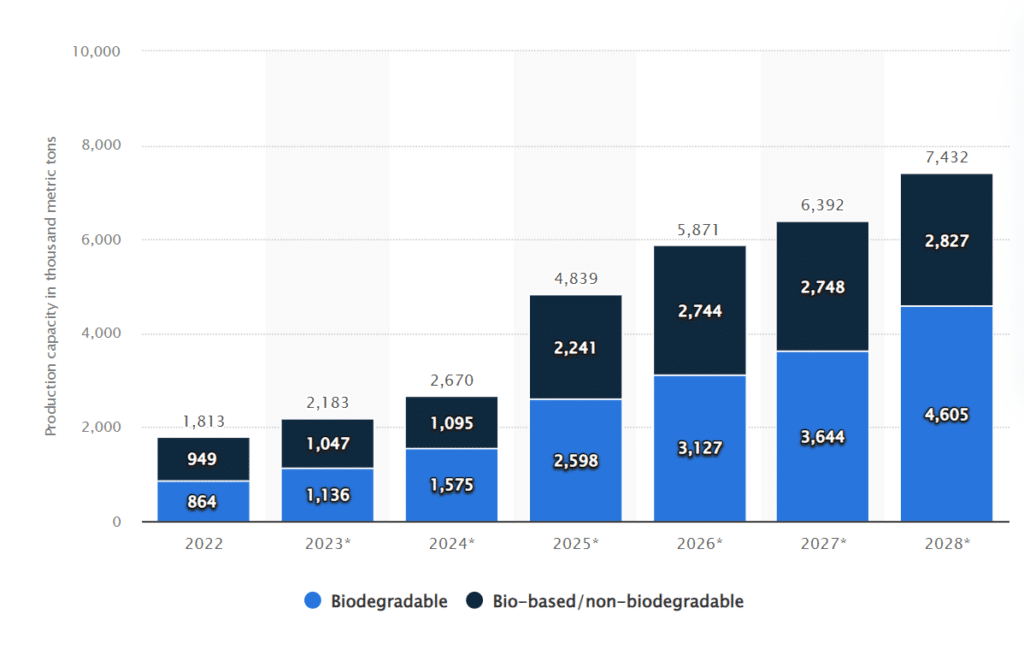
Drawbacks of Plastic Alternatives
There are some challenges for adopting many of these alternatives to plastics.
- GHG Emission: Plant-based plastic alternatives require growing and harvesting in addition to manufacturing. These added layers to the production process may increase GHG emissions.
- Inefficient Production: Many innovative plastic alternatives, like seaweed, require manual processing. This takes up a lot of time and adds to the cost.
- Pesticides: Plastic alternatives made from plant materials carry with them the risk of pesticide contamination. This is something that could be remedied using AI agricultural robots in the future.
- Methane: Bio-based plastics alternatives are not entirely biodegradable. They are only partly made from bio-materials. When these alternatives get thrown in landfills, they can produce methane which will aggravate the global warming problem. However, this is also true of traditional plastic.
- Higher Cost: Some bioplastics cost 20% to 50% more to produce than traditional plastics making them financially unsustainable.
There is no perfect solution to plastic pollution, but the development of all these possible plastic alternatives is inspirational and brings with it some amazing innovations for the future. It’s only a matter of time before we find the best solutions to plastic pollution.
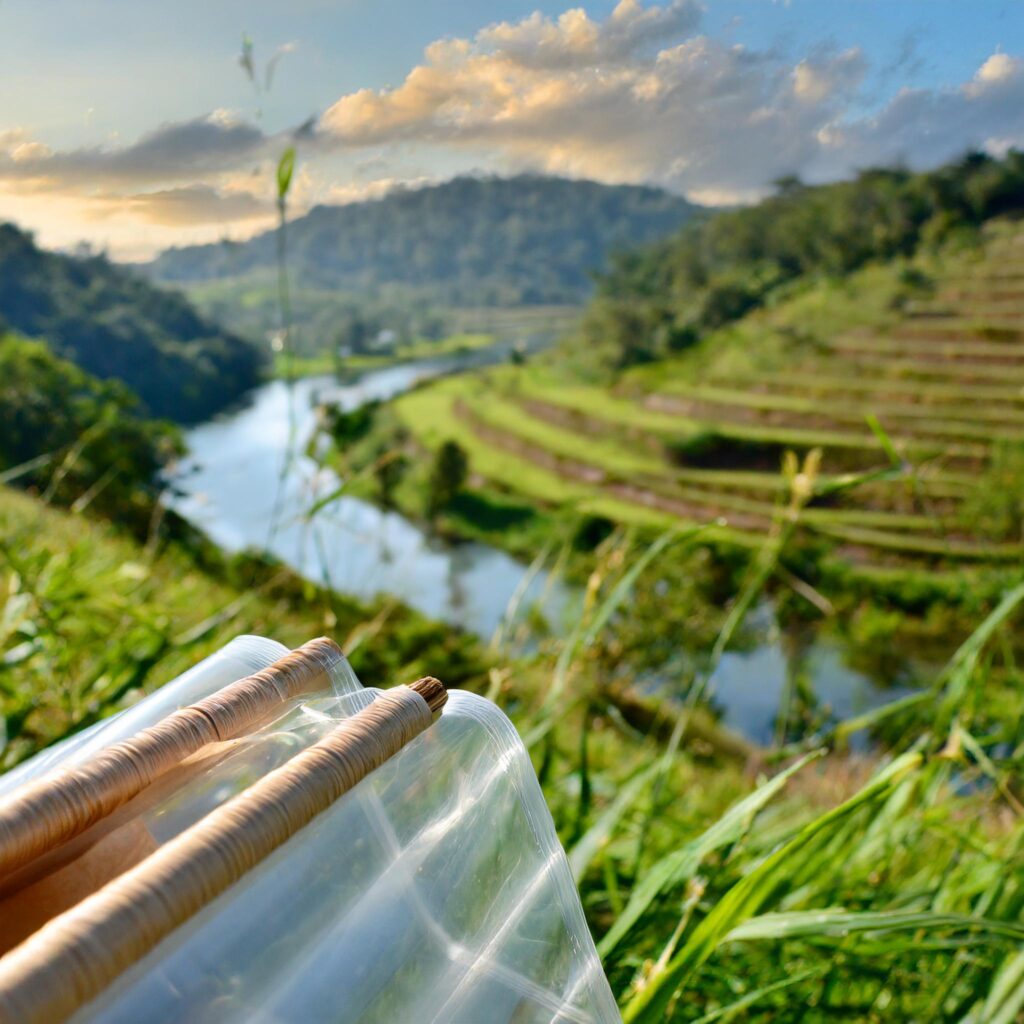
IC Inspiration
Of course, the best way to make the plastics pollution problem a thing of the past would be to just not have any more plastic at all. However, that’s not ideal and probably wont ever happen.
Plastic is everywhere. We use it daily whether we realize it or not, and whether we want to or not. It’s not just in the obvious places like shopping bags and straws, but It’s also in places most folks wouldn’t even think of, like tea bags, toothpaste, and shampoo. It’s tempting to wonder whether it’s actually possible to eliminate plastics in our lives at all.
People like Erin Rhoads says yes, it is. Better than that, though, she’s proven it by actually going plastic-free for the last two years.
She documents her journey to a plastic-free existence on her blog Rogue Ginger. She also offers tips for reducing plastic use in everyday life and reviews of low-waste products. She even provides guidance for things many people would never think of, like how to have a sustainable Christmas or wedding ceremony.
There is no perfect solution to plastic pollution (and that could even be a song). But Erin is all about documenting her life’s journey on a plastic-free road!
Sustainability
Seaweed Plastic: An Emerging Solution to Plastic Pollution
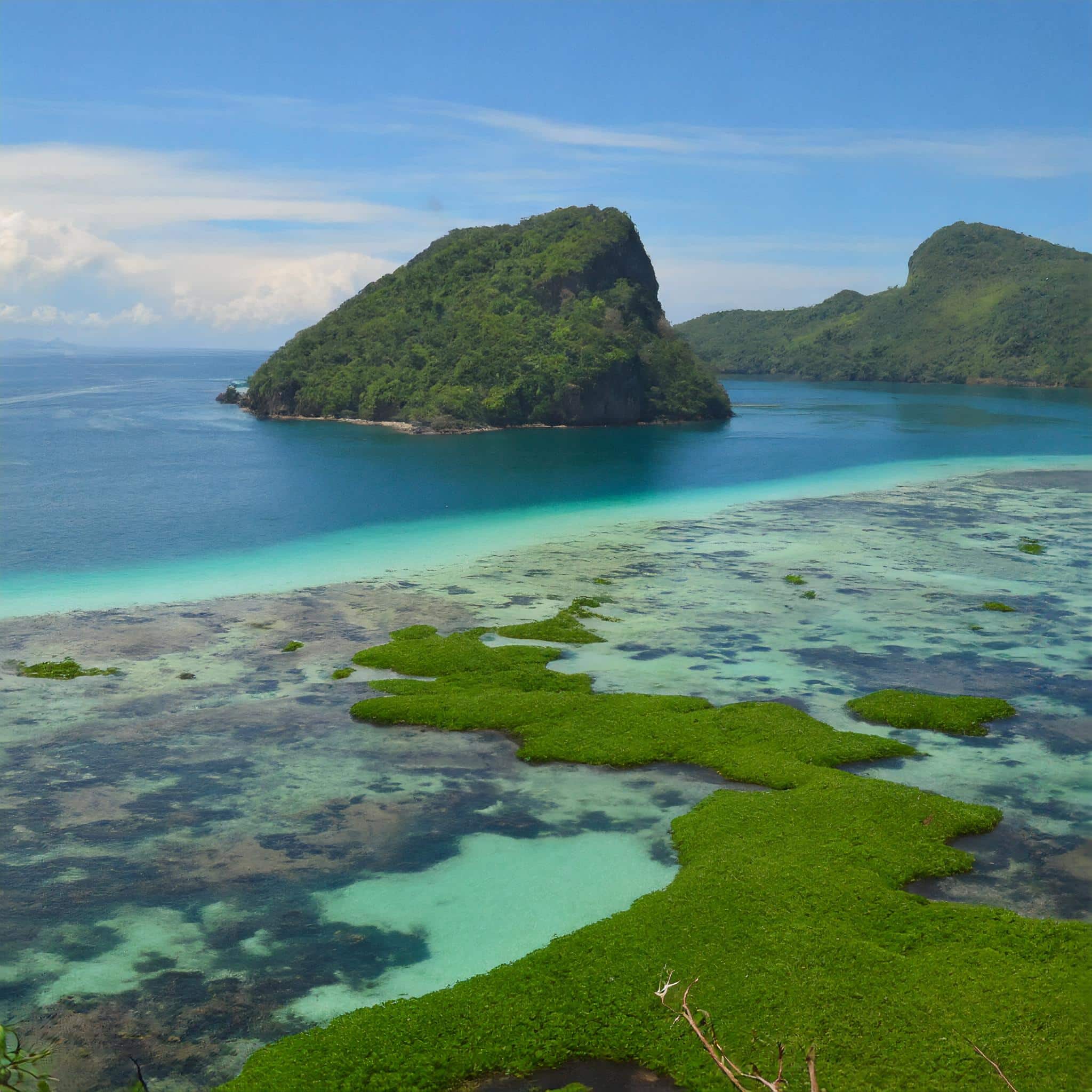
Table of Contents
Seaweed Plastic
Every minute, two garbage truck’s worth of plastic enters our oceans.
And every other minute, thousands of people across the world dedicate themselves to creating low-cost, biodegradable plastic alternatives that dissolve as soon as it enters the ocean.
This spells good news for the future of our human underwater habitats.
What is Seaweed Plastic?
Seaweed plastic are plastic alternatives that are made from seaweed, and that are bio-degradable. This means that when any of these “plastics” reach the ocean, it will dissolve as soon it touches the water. Moreover, seaweed is also edible, making seaweed plastics less likely to end up in oceans because there is an option that it might end up in the stomach of users.
Who Invented Seaweed Plastic?
The Idea of a seaweed plastic alternative was developed by engineering college students Rodrigo García González, Pierre-Yves Paslier and Guillaume Couche. They were the first to invent the “edible water bottle”, a sachet made from seaweed which contains water, and which was sold by the startup Ooho. in 2019, Ooho rebranded to the name Notpa, and has since included food packaging, rigid cutlery and containers among their bioplastic products.
What are the Disadvantages of Seaweed Plastic?
- High Cost: Production costs are high for seaweed plastics, making their demand low and their production limited.
- Less durable: Seaweed plastic alternatives are biodegradable, but they have weak mechanical properties compared to traditional plastics. This makes them less durable, and more prone to tearing.
- Limited Applications: Seaweed plastics currently have a very limited use and are often restricted to gift and food wraps, tea bags, and sachets; whereas, conventional plastics can be used for almost everything.
What are the Advantages of Seaweed Plastic?
Less than 10% of plastics actually end up being recycled. This makes seaweed plastic alternatives much more practical as a solution to plastic pollution than recycling. The advantages of seaweed plastic alternatives include the following:
- Biodegradable: Traditional plastics can take centuries to decompose; however, plastics made from seaweed dissolve as soon as it reaches the ocean.
- Edible: Bioplastics made from seaweed don’t need to reach the ocean in the first place because they can be eaten. Imagine receiving a gift-wrapped present in the near future and knowing that if you wanted to, you can have your gift and eat it too.
- Carbon Capture: Seaweed cultivation absorbs carbon dioxide from the atmosphere, helping mitigate the affects of climate change and create a clean energy future.
- Healthier Oceans: It is estimated that algae produce up to 70% of Earth’s oxygen. If seaweed plastics end up reaching the ocean, it will contribute to a healthy environment for both terrestrial and marine life—assuming nobody eats their grocery bag first.
Can Seaweed Replace Plastic?
Seaweed is indeed replacing plastic, but not to the extent where it is currently making a large difference in reducing plastic pollution. Startups like Mumbai-based Zerocircle are creating tea bags, burger wrappers, gift wraps, and grocery store bags from seaweed plastic; however, while seaweed plastics are good for some applications, they are not likely to completely replace plastic.
Zerocircle received $200,000 from the Tom Ford Plastic Innovation Prize for bringing to life a bio-degradable alternatives to plastic films. Lonely Whale in association with TOM FORD BEAUTY and The Estée Lauder Companies have also helped the startup receive widespread market adoption.
While still in its early stages, production methods for seaweed-based bioplastics are evolving. We will see more of these plastic alternatives being used in the future as its uses become more versatile.
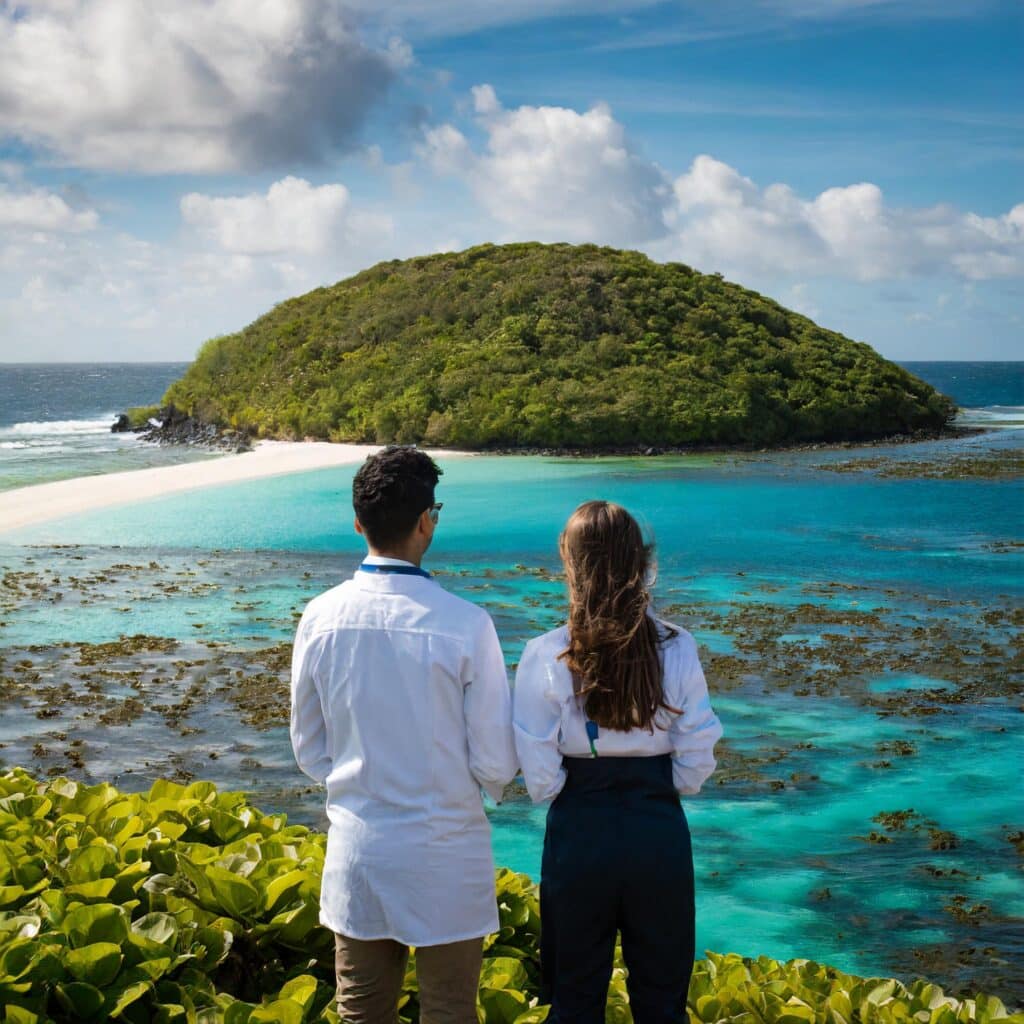
IC INSPIRATION
India has the biggest plastic pollution problem in the world.
In many parts of the world, plastic pollution is so bad, that creating bio-degradable alternatives is the only solution to the problem. For these places, it is more effective to create plastic alternatives that biodegrade than it is to recycle.
Some impoverished areas are not easily accessible to garbage trucks, so the garbage that doesn’t accumulate in these neighborhoods ends up polluting the ocean, and much of this garbage consists of plastics.
Companies like Zerocircle is so ingenious because it seeks to solve a problem by targeting the source.
Efforts to replace traditional plastic with materials like seaweed bioplastics contribute to protecting the ecosystems that support species like long-lived tortoises—which can live up to more than 150 years and have the power to create, change, protect, and even destroy an entire habitat.
If that’s not worthy of an inspiring click, then I don’t know what is!
Sustainability
Archangel Ancient Tree Archive: Cloning Ancient Trees to Build Strong Forests
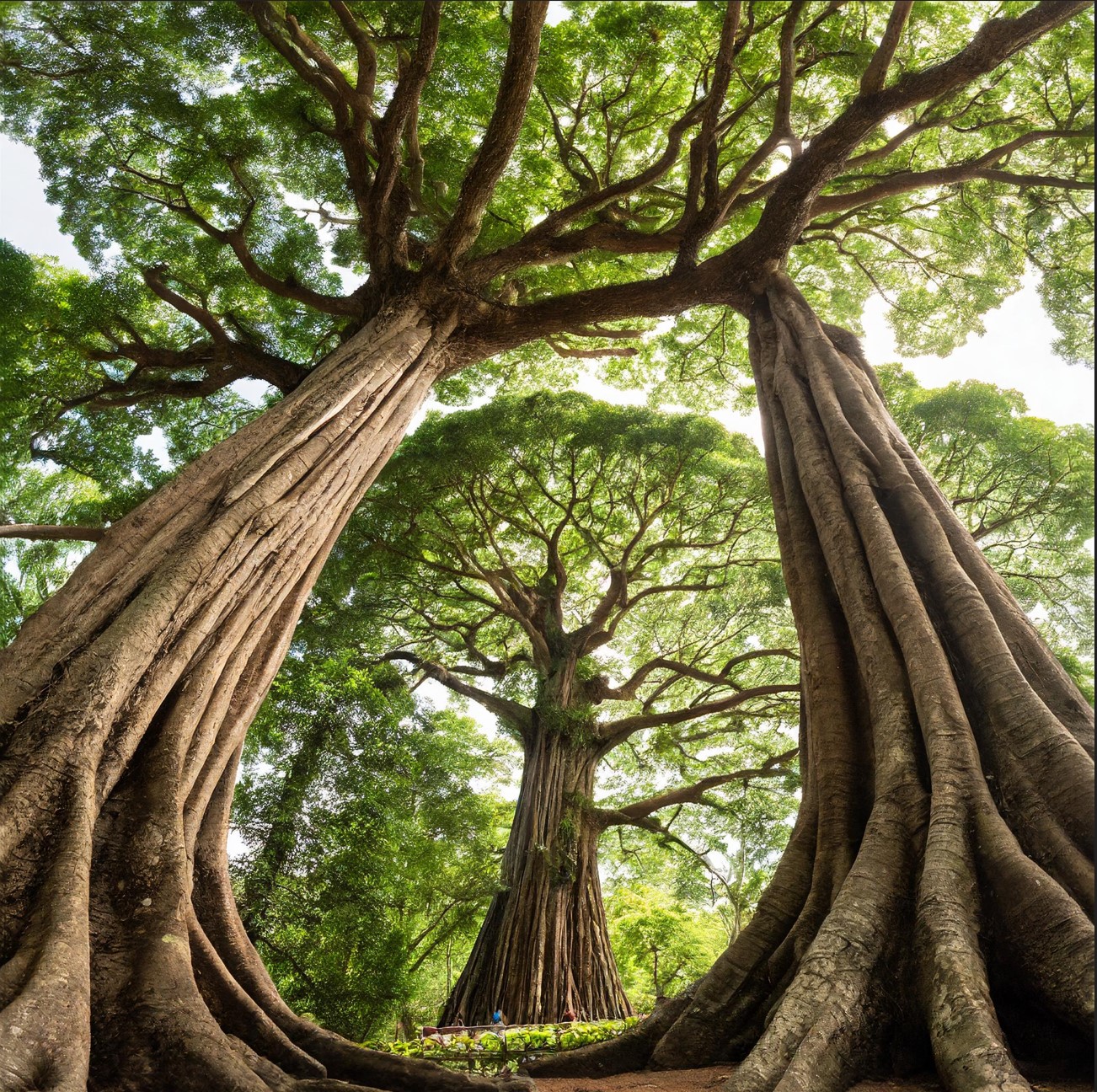
Table of Contents
Archangel Ancient Tree Archive
Archangel Ancient Tree Archive (AATA) is a non-profit organization that locates and then clones the world’s most ancient trees. They do this to propagate the powerful DNA of these ancient trees—which they say can cool down the earth 10 times faster than ordinary trees can.
Where is the Archangel Ancient Tree Archive?
Volunteers at Archangel have successfully cloned over 150 ancient trees and then planted tens of thousands of these trees in over 7 countries including France, the US, and New Zealand. Trees act as powerful carbon stores, and that is part of the reason why such great emphasis is put on regrowing forests to stop the climate crisis.
History of Archangel Ancient Tree Archive
In 2008, co-founder David Milarch embarked on a journey to save the last remaining population of old-growth trees after a life-long battle with alcoholism led him to a near-death experience.
A day came when he was so fed up with the life he was living that he left his bottles of alcohol outside his room door and locked himself in. He made a strong promise to himself that he would not come out until the alcohol was completely out of his system…
3 days later his kidneys began to fail, and he ended up in the emergency room.
When he woke up, he said he was revealed a mission: clone ancient trees and then plant them. Ever since, the Archangel Ancient Tree Archive has located the remaining 2% of the largest and oldest living trees on the planet and began cloning them, then preserving their genetics in a “Living Library”.
This living library preserves the genetics of these trees by species, safeguarding the DNA and genetic heritage of the sort of trees that grow 10 times faster than current generations. Trees that grow 10 times faster will help in recovering forests lost to deforestation and forest fires 10 times quicker, creating lusher forests, and contributing to the planet’s health at a rate that is faster than the descendants of these trees.
Champion Trees of the AATA
David Milarch’s family and numerous volunteers of the Archangel Ancient Tree Archive have called these trees “Champion Trees”. The idea is that by planting them, these Champion Trees go on to share their genetics with existing trees, which strengthens the forests’ ability to store carbon and preserve habitats.
In their YouTube video “About Archangel Ancient Tree Hive”, Dr. William J. Libby, science advisor at Archangel expresses: “What we are doing is, we are not changing the genetic constitution of any trees. In fact, we are trying to capture that so it can be studied in the future without being changed.”
How do you Clone Ancient Trees?
Volunteers climb to the top of these trees, trim the ends of the branches from a height not yet touched by any chemicals or new hormones, and send the cuttings to their Michigan facility so that cloning can begin.
This entire process of cloning, archiving, and then reforestation, has become a healing system for the entire planet, thanks to the efforts of David Milarch and this motivational organization.
How Does the Archangel Ancient Tree Archive Help Forests?
In 2020 the devastating Castle Fire took away half of the ancient trees in Sequoia Crest in California, which is home to the oldest living trees on the planet. These trees were presumed to be immune to fires.
However, AATA foresaw the possibility of such an event happening due to rising temperatures and had been working for a decade before the event to collect material and clone these ancient trees from American forests. Ultimately, these seedlings helped the team to quickly rebuild the burnt area of the forest and provide new life to these giant Champion Trees, and the habitats that come with them.
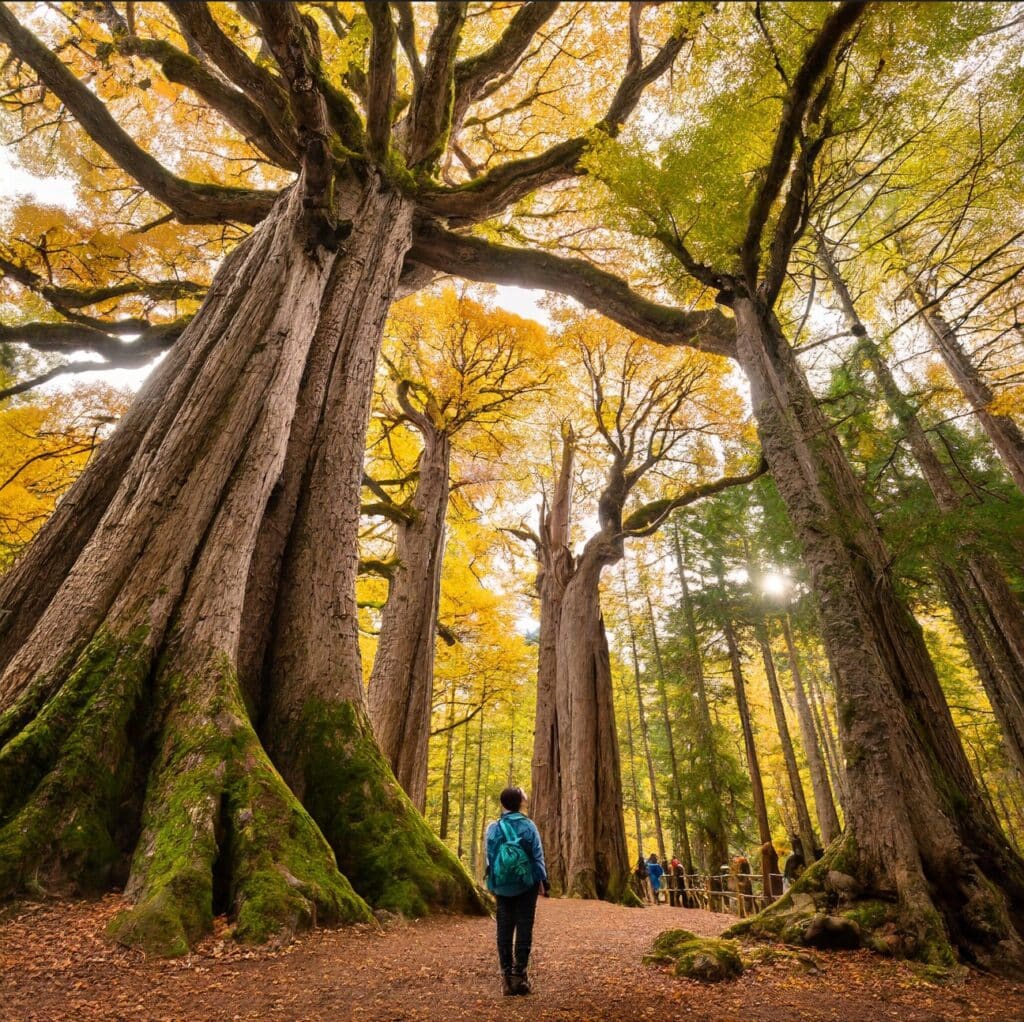
IC Inspiration
The wisdom embedded in trees preserved by The Archangel Ancient Tree Archive goes beyond our full understanding, but from what we do understand, trees are fascinating beyond what we could have imagined.
In Peter Wohlleben’s book “The Hidden Life of Trees”, he familiarizes us with the ability of trees to feel and communicate with life around them. They share signals, nutrients, and information with one another through their intricate system of roots. They have even shown that they know, in their own way, that they have families. They can feel pain and even protect one another from harm.
For example, in South Africa, acacia trees employ a fascinating communication method by releasing a “warning gas” called ethylene to alert neighboring trees of the looming threat of giraffes who are waiting to feast on their leaves. The trees that receive this warning gas through the air on time, quickly respond by releasing toxins into their leaves, making them bitter for giraffes to consume them.
The giraffe stops eating them, and those trees stay protected.
This is what allows the ancient trees to strengthen the newer species around them; they carry the resilience and wisdom required to survive for thousands of years against all odds.
Archangel has also started a Tree School which is meant to be an inspiration to the younger generation, encouraging them to reforest the planet and save it from the dangers of climate change.
Forest schools descended from Europe and can now be found in places all around the world. These schools provide education in outdoor environments like forests. The Archangel Ancient Tree Archive notes that schools like this will play a very important role in the future.
“My vision for Tree School is to have something so simple, so compelling, a major solution to reversing climate change so that all the world’s grandchildren and the ones to come, have a fair shot at being able to survive on this planet.” Notes David Milarch on the official website.
With more people coming together to preserve the natural ecosystem of this world, such as The Singhs, who restored a significant part of the Ranthambore Forest to provide a home for endangered tigers, the future of our planet Earth looks brighter than ever before!
-

 Science2 years ago
Science2 years agoThe Largest Body of Water in the Universe is Floating in Space. Can We Use It?
-
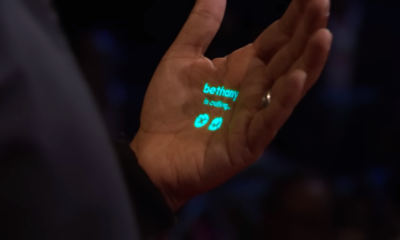
 Technology2 years ago
Technology2 years agoThe Humane AI Pin is Here! So is Everything You Need to Know
-

 Healthcare2 years ago
Healthcare2 years ago3D Printing in Hospitals Has Saved Children’s Lives
-

 Technology2 years ago
Technology2 years agoAlef Model A Flying Car Pre-Orders Surge to a Whopping 2,850
-
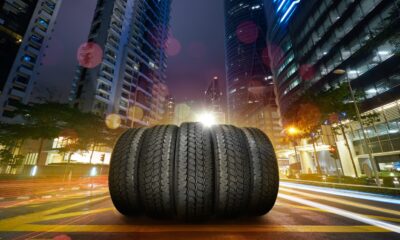
 Technology2 years ago
Technology2 years agoMichelin Uptis: Airless Car Tires Emerging in 2024
-
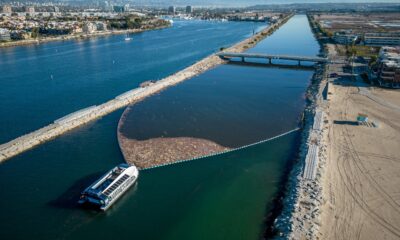
 Sustainability2 years ago
Sustainability2 years agoTeamSeas Uses Gigantic Robot to Battle Plastic Pollution
-

 Technology3 years ago
Technology3 years agoNew Atmospheric Water Generator Can Save Millions of Lives
-
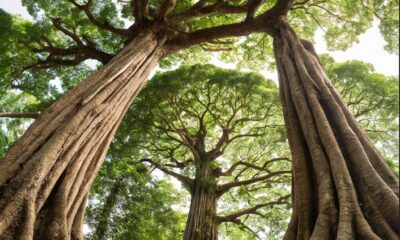
 Sustainability2 years ago
Sustainability2 years agoArchangel Ancient Tree Archive: Cloning Ancient Trees to Build Strong Forests





